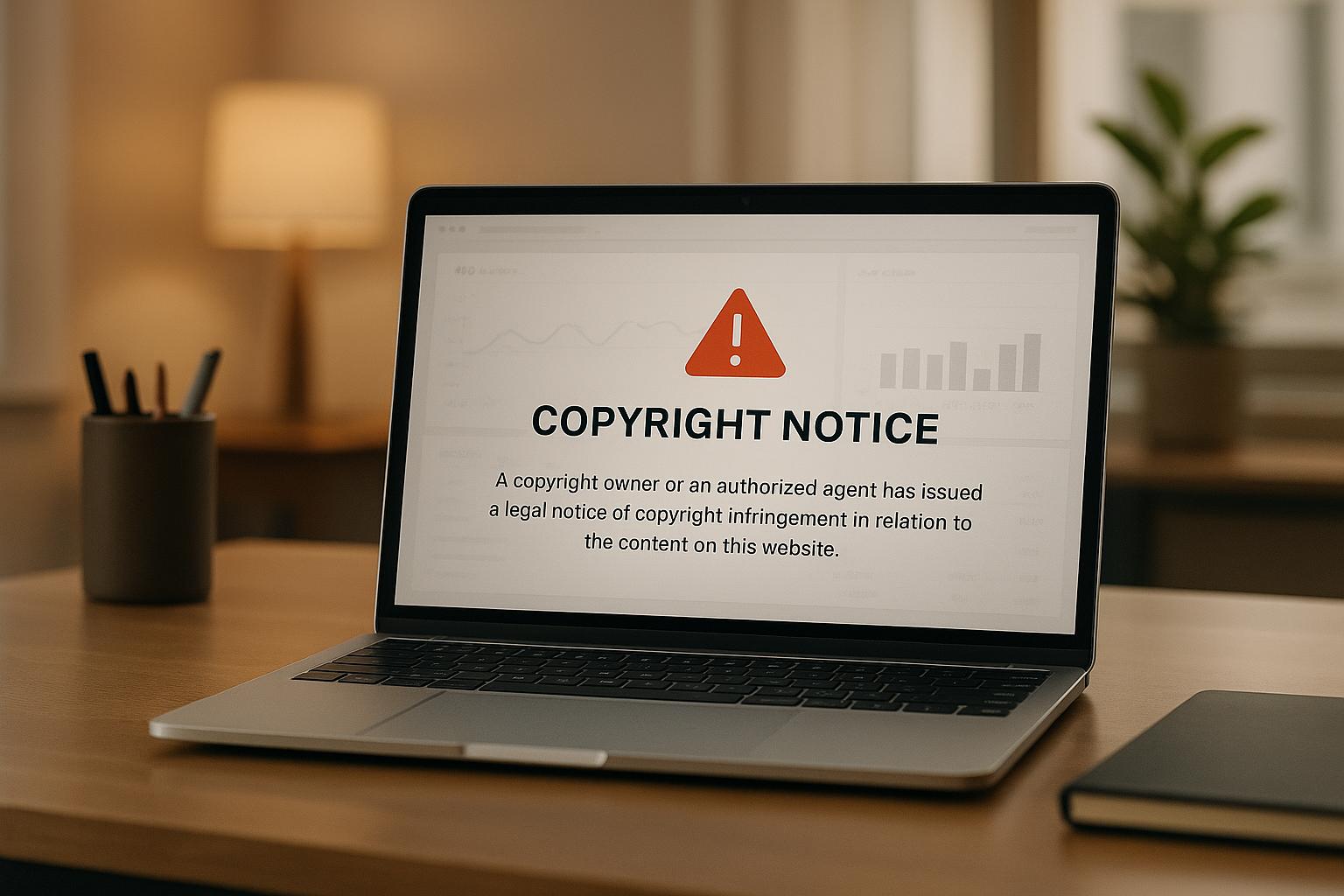Category pages are critical for SEO success in e-commerce. They target broad, high-traffic keywords (e.g., "women's shoes") that product pages often miss, driving more visibility and conversions. Unlike product pages, these serve as hubs for related products, generating 19% more ranking keywords and attracting 413% more traffic. Non-e-commerce category pages, on the other hand, focus on organizing content, engaging users, and building trust through information rather than sales.
Key Takeaways:
- E-commerce category pages: Drive sales by targeting commercial keywords, offering filters, and optimizing layouts for user intent.
- Non-e-commerce category pages: Organize and showcase content, targeting informational searches to build authority and engagement.
- SEO challenges include managing duplicate content, technical issues like crawlability, and balancing user experience with keyword targeting.
Both page types require tailored strategies to meet user intent and SEO goals effectively.
1. E-commerce Category Pages
Primary Objectives
E-commerce category pages play a crucial role in driving revenue by connecting potential buyers with the products they’re searching for. Unlike general web pages, these pages are designed to target users in the decision-making phase, often using high-traffic commercial keywords like "women's running shoes" or "gaming laptops under $1,000". This makes them direct contributors to sales, not just tools for attracting traffic. To meet these goals, structuring content effectively is key.
Content Structure
The success of e-commerce category pages depends on balancing SEO requirements with a seamless user experience. Visuals are a major factor here - studies reveal that 90% of shoppers consider photo quality to be extremely or very important when deciding to make a purchase. For example, ASOS, which offers over 11,000 women’s tops, uses high-quality, consistently sized product images to elevate its category pages.
Organizing products effectively is another critical element, especially for large inventories. Retailers like Dillard’s enhance usability by including a "New Arrivals" filter, while ModCloth’s category pages mimic the browsing experience of physical stores, encouraging exploration.
Category descriptions also serve a dual purpose: they provide valuable product insights while improving SEO. These descriptions should be concise, relevant, and aligned with user intent. For instance, Amour Vert, a sustainable clothing brand, uses short, engaging copy to make its category pages more appealing.
Speed is another non-negotiable. Research shows that 47% of users expect a website to load in under two seconds. This means that fast-loading pages are just as important as high-quality visuals and well-organized content.
SEO Challenges
E-commerce category pages face unique SEO hurdles. One common issue is duplicate content, which can arise when similar products are listed across multiple categories or when filters create numerous URL variations. Competing for high-value commercial keywords also poses a challenge, as many brands target the same search terms.
Another difficulty lies in balancing detailed product information with clean, user-friendly layouts. Features like filtering, sorting, and pagination add complexity to technical SEO. If not implemented correctly, these features can create crawling issues or dilute a page’s authority. Brands like Adidas and Thursday Boot Company tackle these challenges by incorporating structured data, such as reviews and store information, to enhance their category pages.
User Intent
Addressing user intent is essential for optimizing e-commerce category pages. Visitors arrive with varying levels of purchase readiness, and understanding these differences is key. Customers who are ready to buy often use commercial intent keywords and expect to find products quickly. Tools like ASOS’s advanced filtering options help these users navigate thousands of choices efficiently.
For those still in the research phase, additional support can help move them closer to making a purchase. Magic Spoon, for instance, includes an FAQ section on its category pages to answer common questions, while Proper Cloth links to its Tuxedo Shirt Guide from its formalwear category page, offering helpful insights that keep users engaged.
Social proof is another powerful motivator. Manta Sleep uses a scrolling feed of customer reviews on its category pages to build trust and reassure hesitant buyers. This approach works particularly well, as 89% of consumers read reviews before making a purchase, and products with 50 or more reviews see a 4.6% higher conversion rate.
What sets e-commerce category pages apart from other types of web pages is their inherent commercial focus. Every element, from content strategy to page design, must guide users through their decision-making process while making it easy to complete a purchase. This combination of functionality and intent-driven content is what makes these pages so effective.
2. Non-e-commerce Category Pages
Primary Objectives
Unlike e-commerce category pages that focus on driving sales, non-e-commerce category pages aim to engage users with meaningful content and enhance brand visibility. These pages are designed to inform, educate, and build trust, rather than promote direct purchases. They play a vital role in increasing website traffic, showcasing content, and encouraging user interaction. Often found on platforms like news websites, educational portals, and corporate sites, these pages act as hubs, linking to subcategories and highlighting relevant information. Success is measured through metrics like time spent on the page, bounce rates, and lead generation (e.g., form submissions or phone inquiries), rather than focusing solely on conversions or sales.
Content Structure
The structure of non-e-commerce category pages prioritizes clarity and engagement. These pages typically include concise introductions to topics, links to subcategories, featured articles, and intuitive navigation. Informational keywords are paired with visually appealing elements to keep users engaged. The goal is to provide a well-rounded overview while delivering content that genuinely benefits the user. To cater to diverse user needs, these pages often incorporate a mix of keywords, targeting both general information seekers and those conducting in-depth research. Visual elements, such as images and infographics, take precedence over heavy text blocks, helping to lower bounce rates and signaling search engines that the page meets user intent effectively. This thoughtful structure is essential for addressing the unique SEO challenges of non-e-commerce sites.
SEO Challenges
Optimizing non-e-commerce category pages comes with its own set of challenges. Unlike commercial pages, these need to provide real value rather than just serving as a navigation tool. A strong focus on user experience (UX) is critical. As Chris Zacher, Growth Strategist at Intergrowth, points out:
"When it comes to product category pages (or 'product listing pages' if you prefer), the UX is more important than keyword research, page headings, or any traditional SEO tactics."
If the UX is poor or internal linking is overly complicated, bounce rates can spike, and search engines may struggle to crawl the site effectively. Other technical challenges include managing intricate internal linking structures, ensuring crawlability within complex hierarchies, and maintaining consistent and user-friendly navigation. The key is to provide in-depth topic coverage while keeping the layout clean and intuitive, avoiding overwhelming visitors with too much information.
User Intent
Understanding user intent is the cornerstone of successful non-e-commerce category pages. Visitors typically come to these pages for research, not to make a purchase. They may be seeking educational content, company information, or solutions to specific problems. To address this, these pages need to accommodate a variety of intent types - offering broad overviews for general visitors while providing quick access to specific subcategories for those with more focused needs. Features like filters and sorting options, similar to those on e-commerce sites, can help users find what they’re looking for efficiently. Additionally, mobile optimization is crucial, as many users access these pages on their phones. The challenge lies in balancing quick access to information with comprehensive content coverage, ensuring the page remains useful and easy to navigate.
E-commerce Category Page Best Practices
sbb-itb-5be333f
Advantages and Disadvantages
E-commerce and non-e-commerce category pages each bring their own strengths and challenges to the table, directly influencing their SEO performance. While e-commerce pages are designed to drive transactions, non-e-commerce pages focus on providing information and building credibility.
| Aspect | E-commerce Category Pages | Non-e-commerce Category Pages |
|---|---|---|
| Primary Advantages | • Attract high-intent traffic that converts into direct sales • Target keywords geared toward buyers ready to make a purchase • Drive 413% more estimated traffic than individual product pages • Serve as landing pages with clear conversion paths |
• Deliver valuable information that educates users and enhances brand trust • Capture broad informational traffic, which makes up 80% of searches • Build authority through useful content and resources • Cover topics comprehensively, offering in-depth insights |
| Key Disadvantages | • Managing large inventories and dealing with frequent product changes • Risk of duplicate content due to reliance on manufacturer descriptions • Complex navigation structures can create duplicate page issues |
• Producing consistently engaging content without direct sales appeal • Attracting quality backlinks without a commercial hook • Sustaining traffic without transactional intent • Requires ongoing effort to create fresh, authoritative content |
Traffic Performance and User Intent
When it comes to traffic and user intent, the differences between these page types become even clearer. E-commerce category pages excel at attracting users with commercial intent, which makes up just 10% of all searches but yields far higher conversion rates. Quentin Aisbett, Director & Search Visibility Strategist, highlights their importance:
"For years, category pages were the MVP of eCommerce SEO. They ranked well, pulled in high-intent traffic, and helped shoppers compare options quickly. They weren't just pages – they were doorways into your online store."
However, these pages also face hurdles, such as seasonal traffic changes and the challenge of managing ever-changing inventory .
On the other hand, non-e-commerce category pages tap into the massive pool of informational searches, which account for 80% of all queries. While this broader reach can drive significant traffic, it also comes with the challenge of standing out in a crowded space without a clear path to conversions.
Content Strategy Challenges
E-commerce category pages often grapple with technical issues. Poorly structured navigation can confuse search engines, leading to crawling problems. Additionally, managing thousands of product variations without falling into the trap of thin or duplicate content - especially when relying on manufacturer-provided descriptions - requires careful planning.
For non-e-commerce pages, the challenge lies in keeping visitors engaged. Without a direct sales focus, these pages must consistently deliver meaningful value to maintain user interest and build loyalty.
Modern SEO Evolution
SEO has evolved, and category pages now play a more dynamic role than ever before. They're no longer just gateways to products or information - they're multi-functional hubs. As Aisbett explains:
"Your category page isn't just a gateway to product listings anymore. It's: A landing page for first impressions, A content hub for AI tools and users alike, A trust builder before the PDP, A conversion driver in its own right."
This shift means both e-commerce and non-e-commerce category pages need to go beyond basic functionality. They must offer expert advice, buying guides, and trust signals that resonate with users and search engines alike. The difference lies in their execution: e-commerce pages prioritize driving purchases, while non-e-commerce pages focus on educating and establishing authority.
Conclusion
E-commerce category pages are a powerhouse for driving high-intent traffic and boosting sales, while non-e-commerce pages play a crucial role in building trust and nurturing long-term customer relationships through informative content.
The data highlights just how vital this distinction is for e-commerce businesses. As Jeff Hirz from OuterBox Design puts it:
"Ecommerce SEO is more important for eCommerce websites than ever before. A strong eCommerce SEO strategy is crucial for maximizing organic visibility in search engines."
Research backs this up, showing that category pages generate 19% more ranking keywords and offer significantly greater traffic potential compared to product pages.
For e-commerce sites, the path to success lies in technical optimization and improving user experience. This includes implementing structured data, optimizing internal links to transfer authority from blog content to category pages, and ensuring mobile-friendly navigation. Enhancements like buying guides, FAQ sections to target long-tail keywords, and breadcrumb navigation for better crawling are also key strategies . These efforts not only improve category pages but also lay the groundwork for integrating advanced SEO tools.
To address these challenges, tapping into specialized resources can make a big difference. Platforms like the Top SEO Marketing Directory provide access to technical SEO tools, content optimization services, and solutions tailored specifically for e-commerce needs.
With 96.55% of websites failing to receive any organic traffic from Google, optimizing category pages is not just a best practice - it’s essential for staying competitive in the e-commerce landscape. Whether you're managing massive product inventories or focusing on building authority with educational content, mastering these strategies is the key to unlocking SEO success.
FAQs
How can e-commerce websites handle duplicate content on category pages effectively?
To tackle duplicate content issues on category pages, you can rely on canonical tags to signal search engines toward the main version of the page. For pages that are no longer necessary, implement 301 redirects to merge their value into more relevant pages. If there are less important pages that don’t need visibility in search results, applying noindex tags can help keep them out of the index.
You can also make category pages stand out by adding original descriptions, customized content, or specific details that enhance their uniqueness. For paginated category pages, include distinctive subheadings or additional context to ensure every page provides meaningful content and steers clear of duplication.
What are the best practices for improving user experience on category pages for non-e-commerce websites?
To improve user experience on non-e-commerce category pages, prioritize clear and easy-to-use navigation. Offer well-structured filtering options and brief, informative category descriptions to help users find what they need effortlessly. Incorporate high-quality visuals to make the page visually appealing, and ensure the layout is clean and adapts seamlessly to any device. A simple, responsive design not only makes browsing more enjoyable but also encourages users to stay engaged and find the content they’re seeking with ease.
Why do e-commerce sites need unique SEO strategies for their category pages compared to other websites?
E-commerce category pages are a powerhouse for drawing organic traffic. Why? They often target broad, high-traffic keywords that resonate with a large audience. Unlike blogs or other non-e-commerce sites that zero in on niche or highly specific keywords, these pages are built to highlight a variety of products, boosting the overall visibility of the site.
Getting the optimization of these pages right is crucial. They frequently outrank individual product pages in search results, making them a prime opportunity to capture attention. By fine-tuning these pages with smart strategies, you can enhance the user experience, climb search rankings, and ultimately drive more sales. In short, category page SEO is a key ingredient for thriving in e-commerce.


